The Code of Chivalry The Chivalric Code Chivalry,

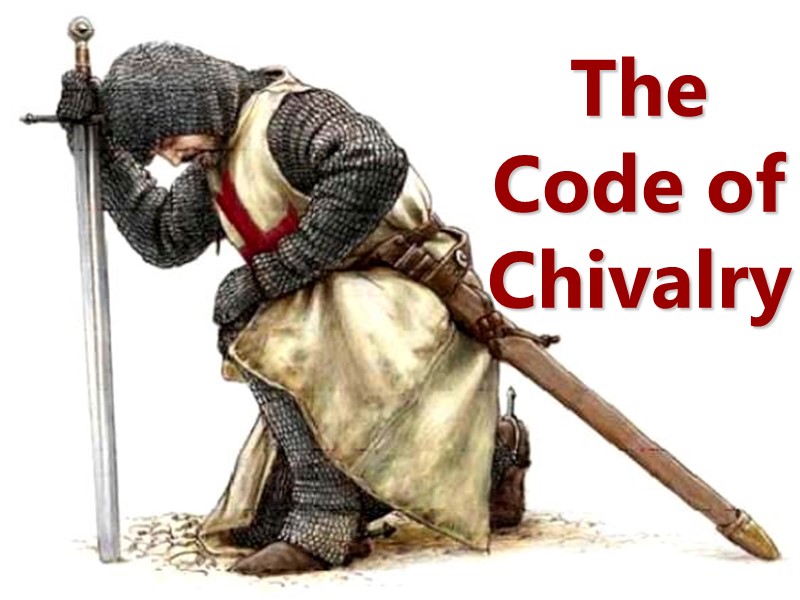
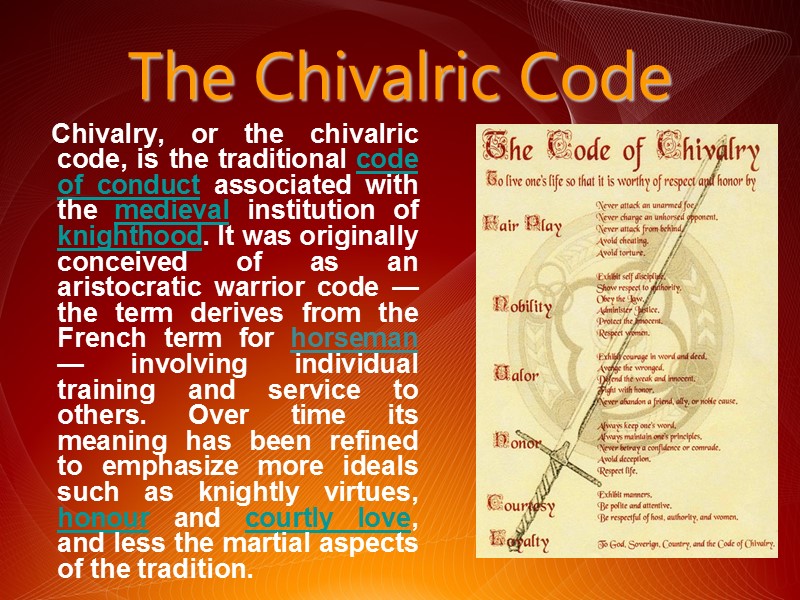
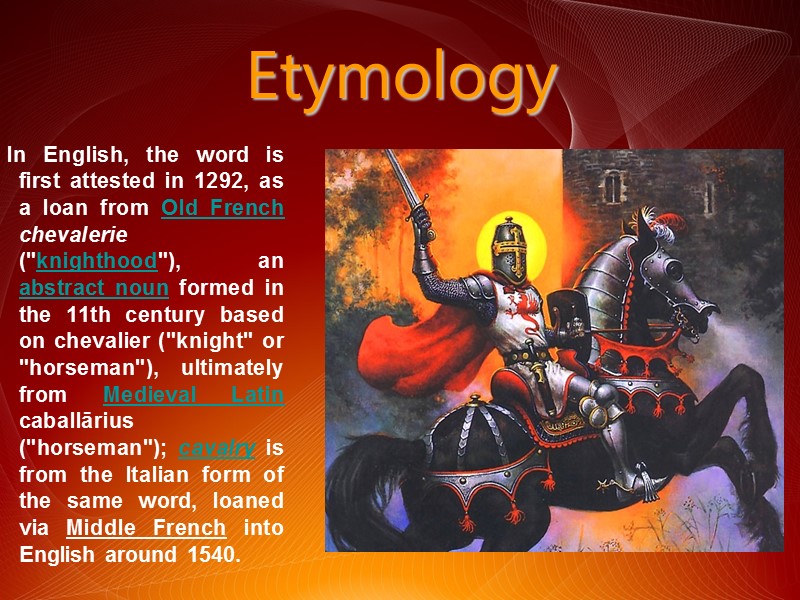
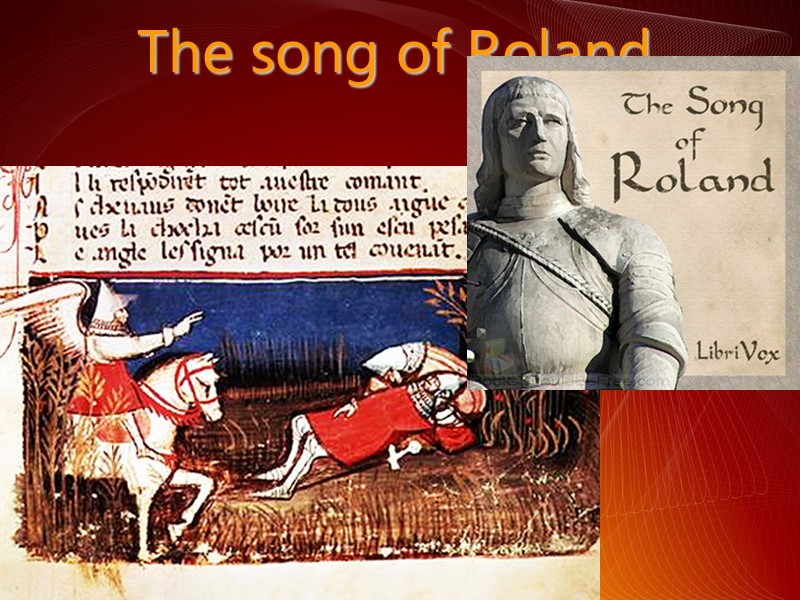
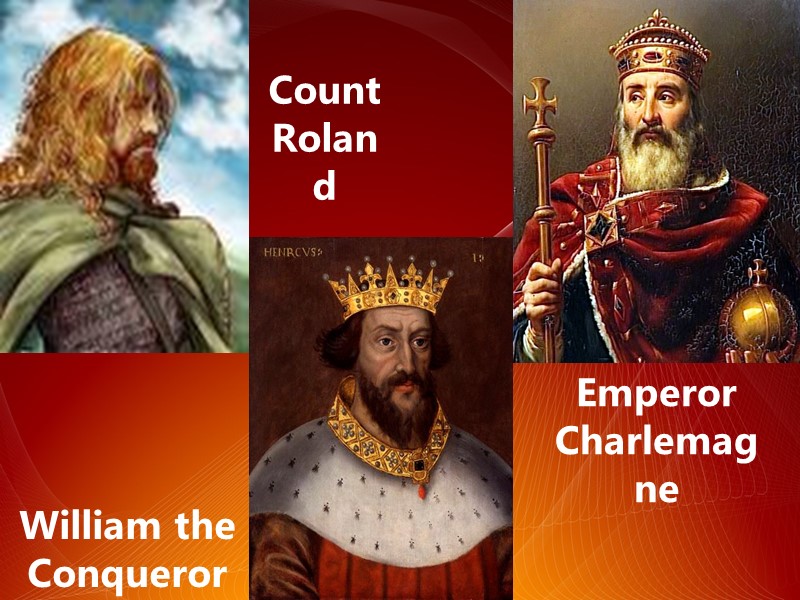
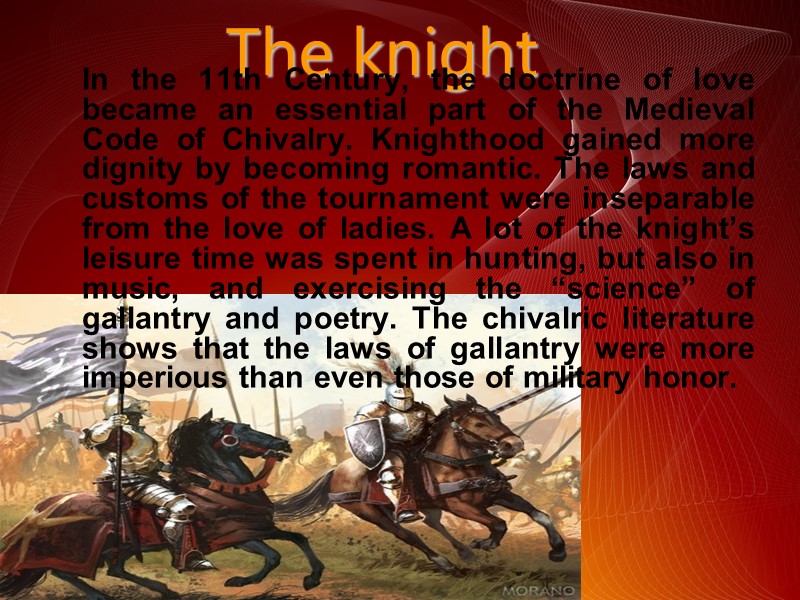
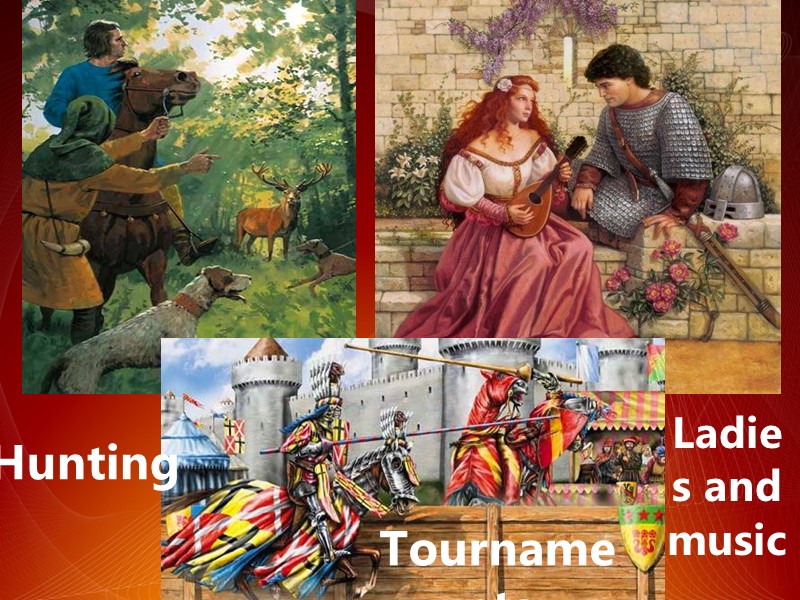

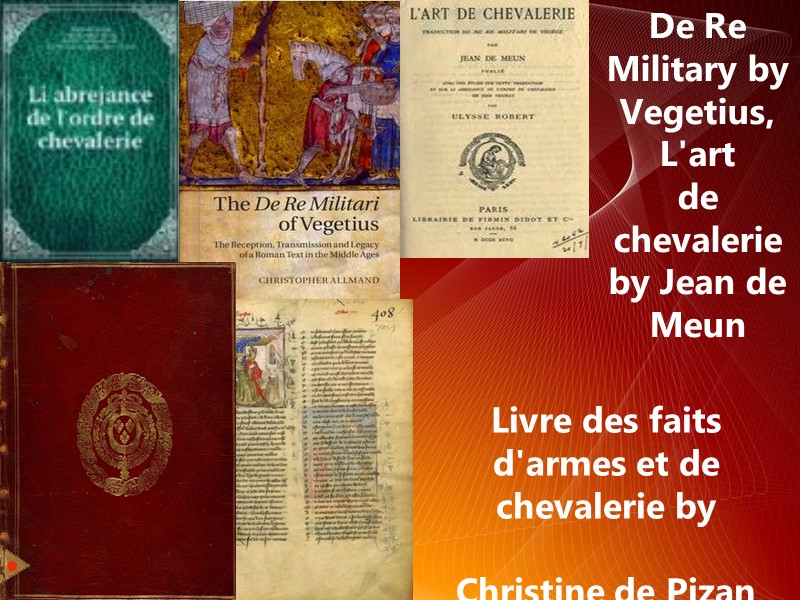
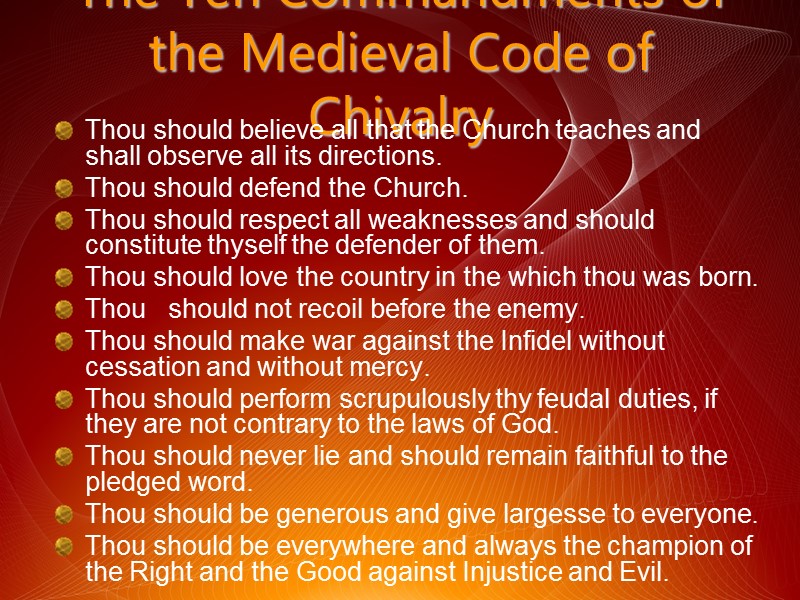
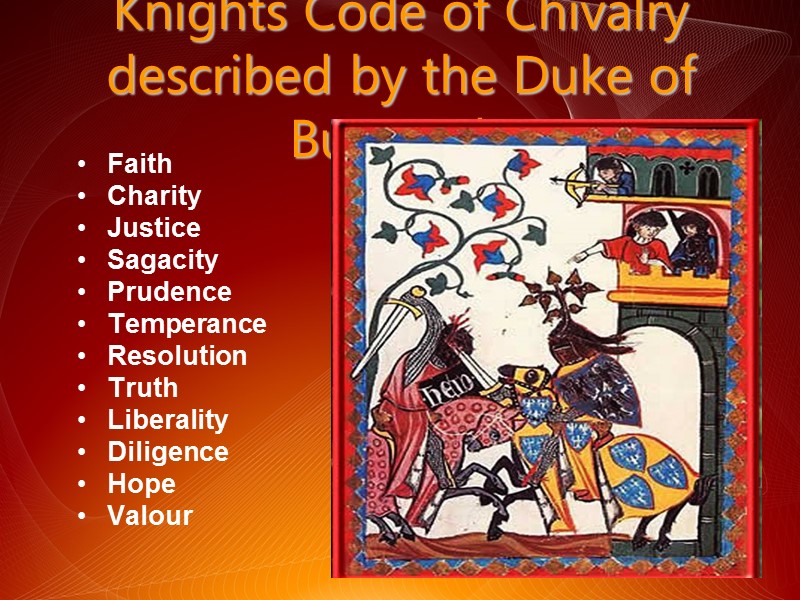
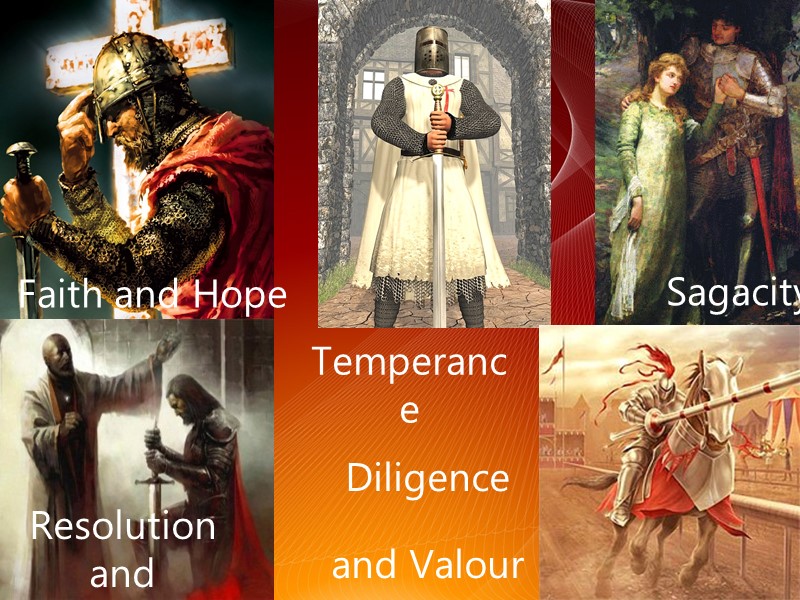
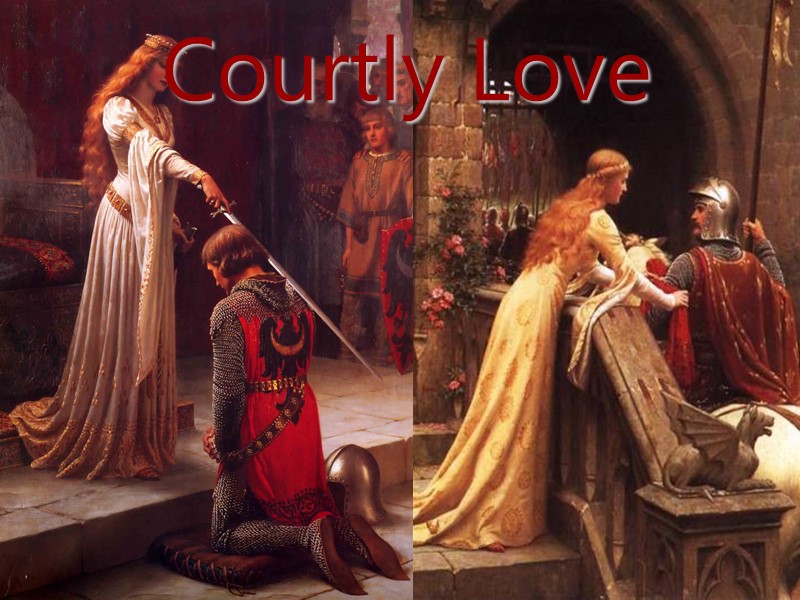
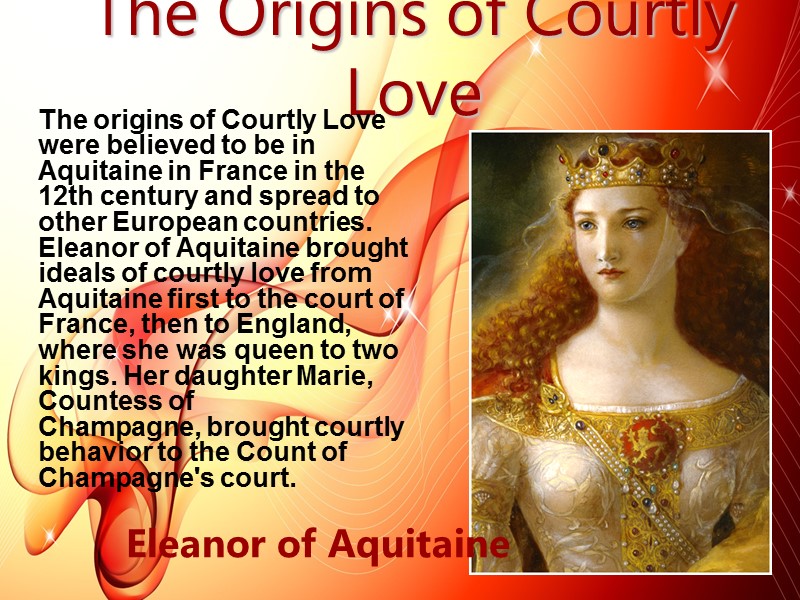
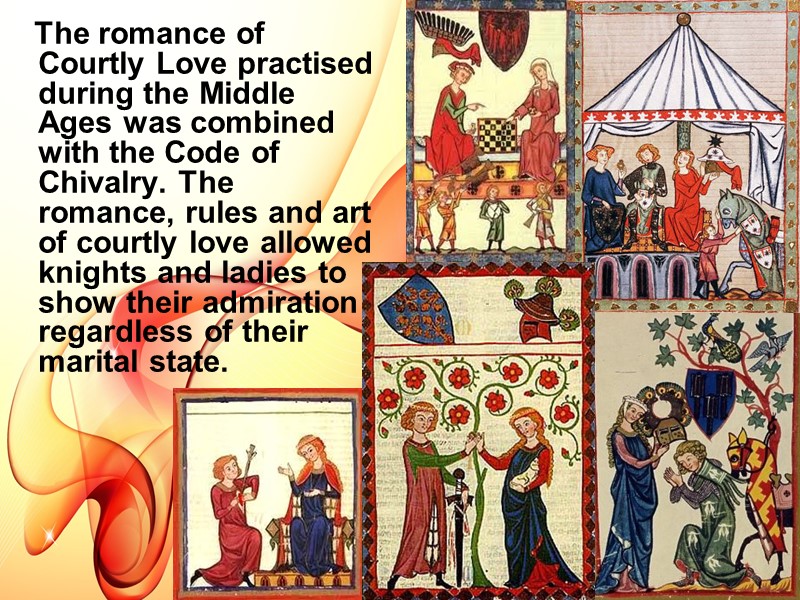
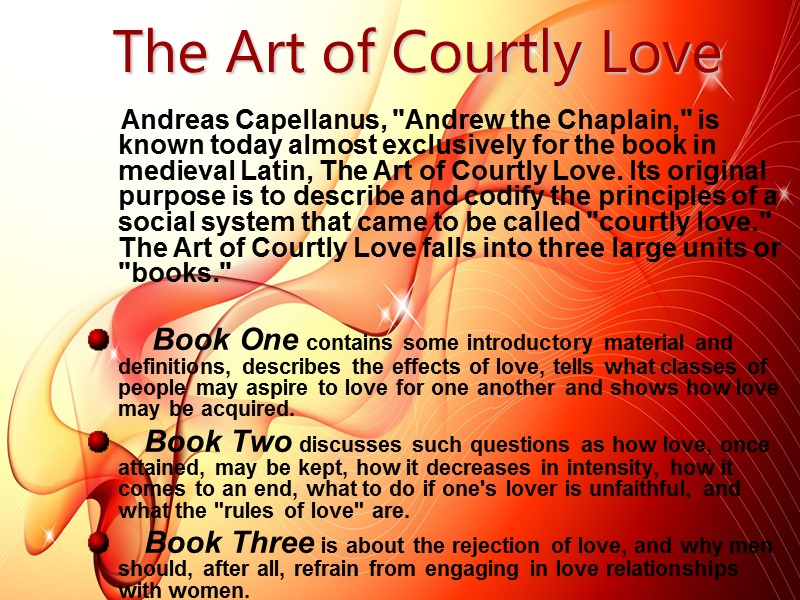
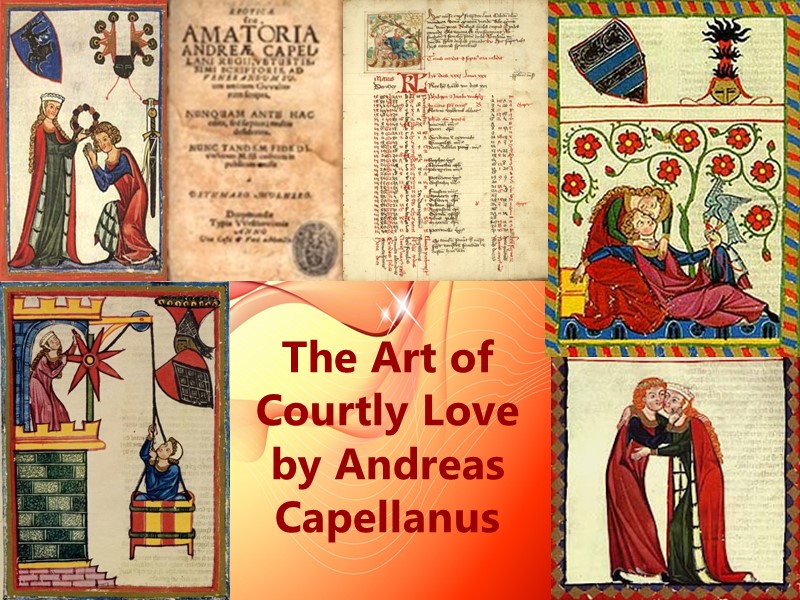
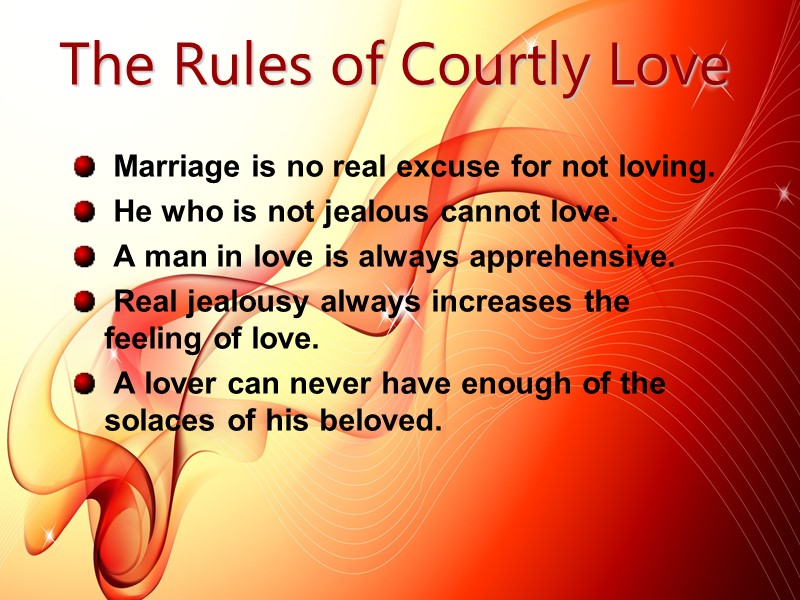
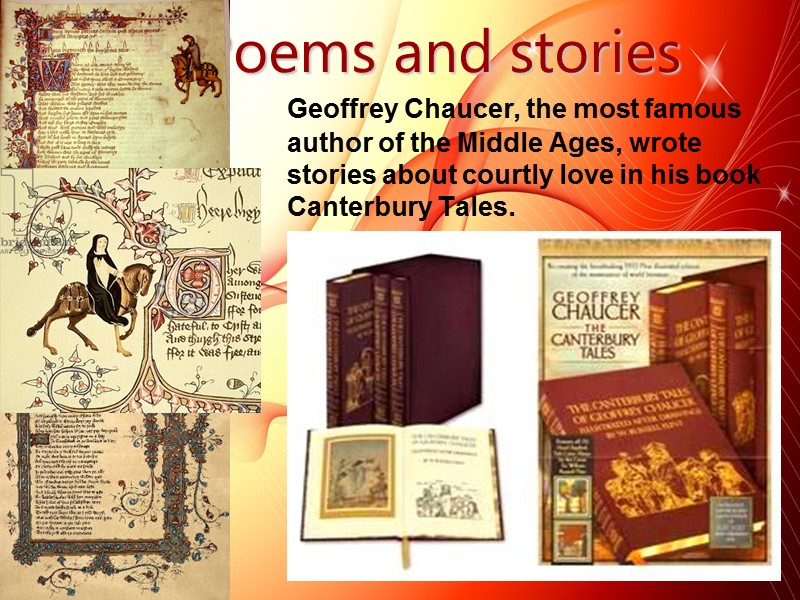
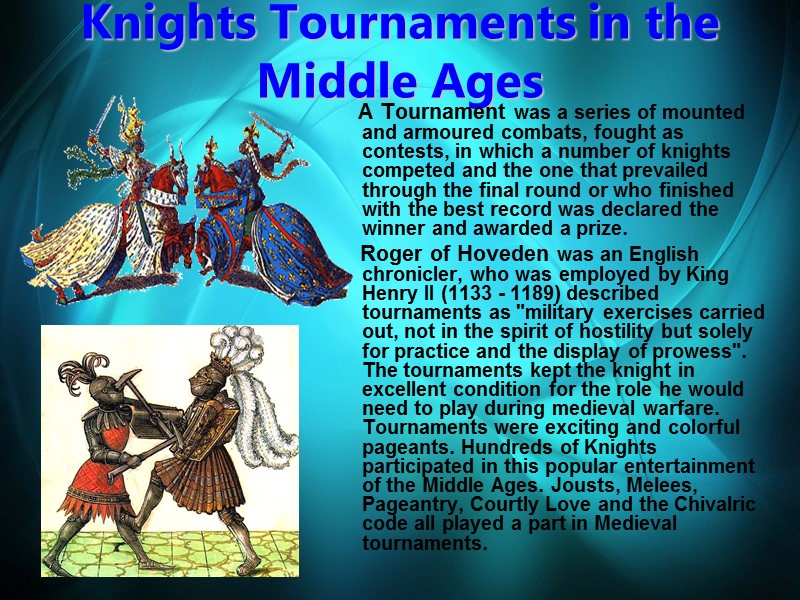
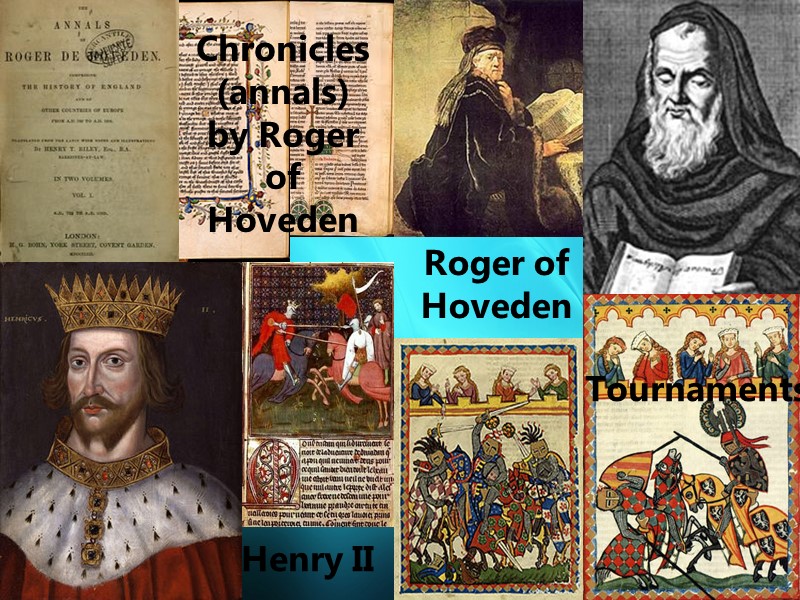
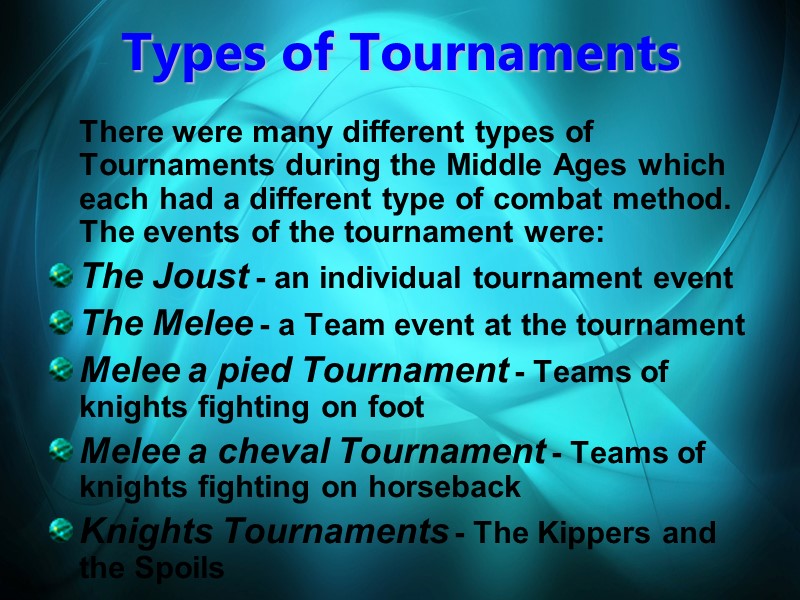
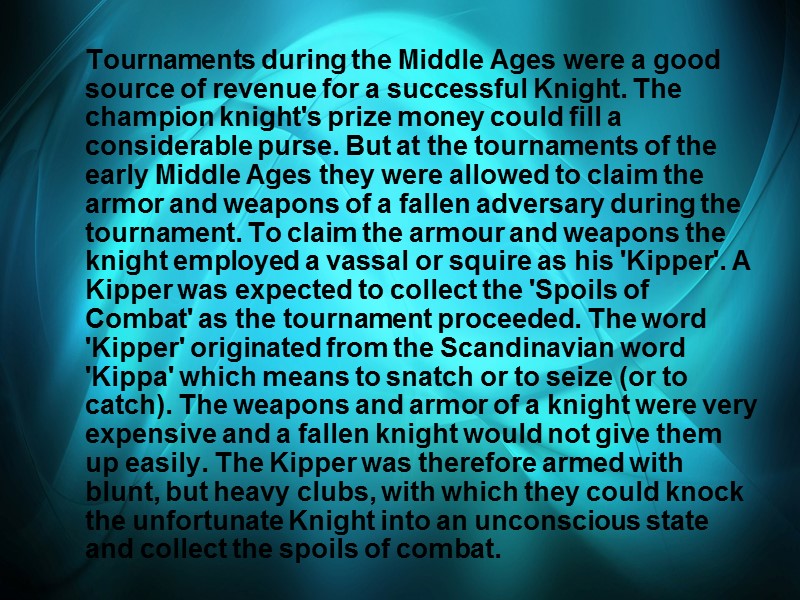

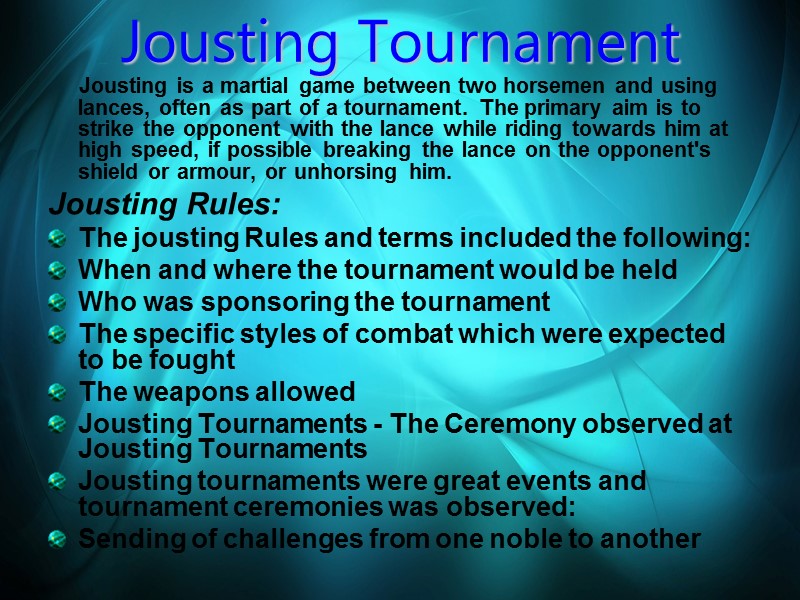
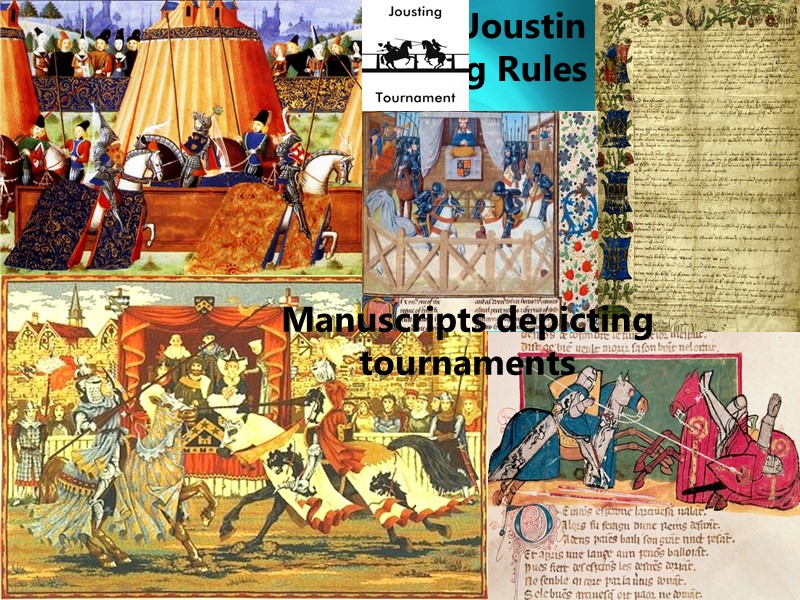
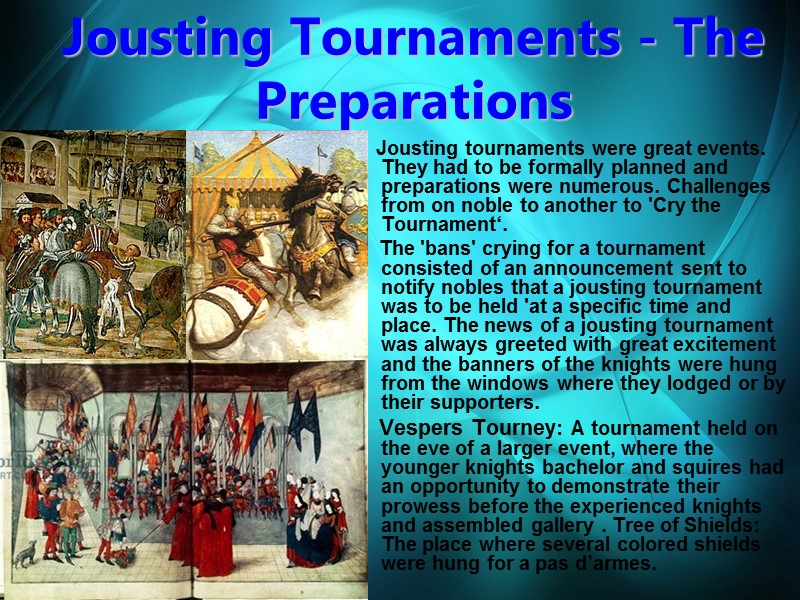

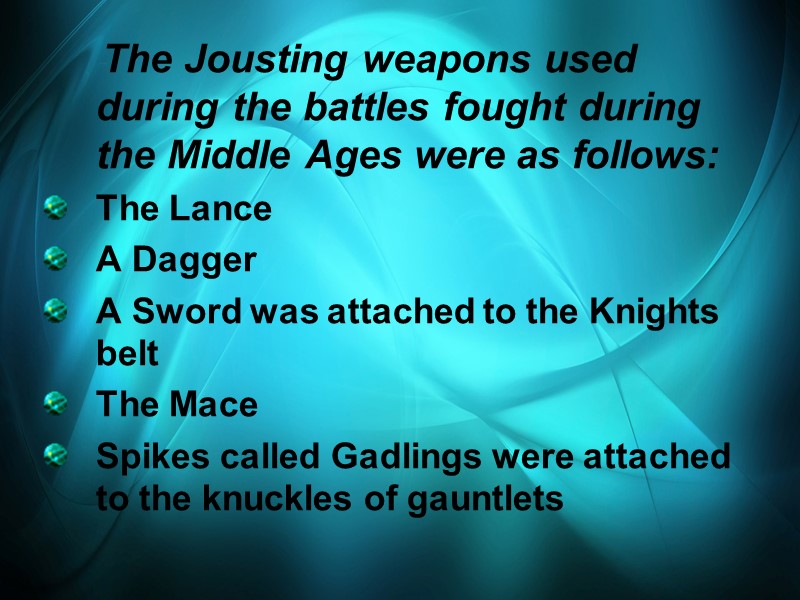
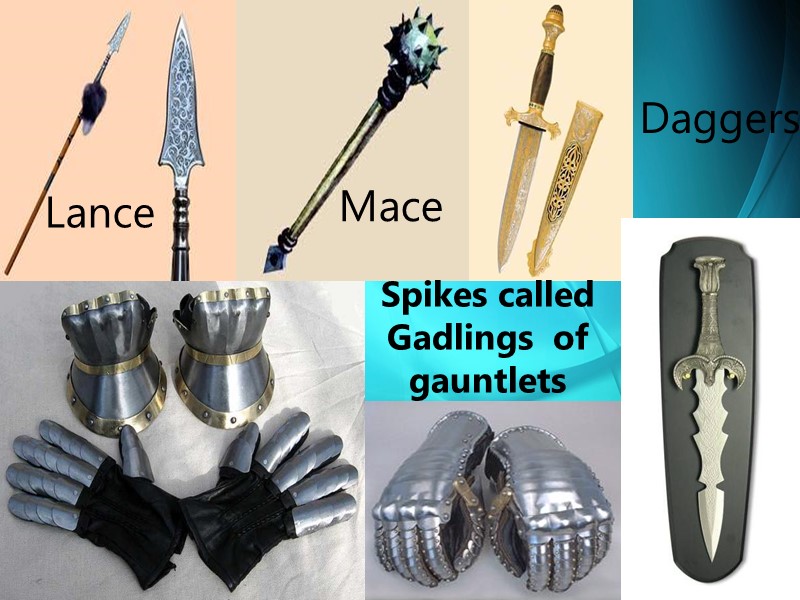
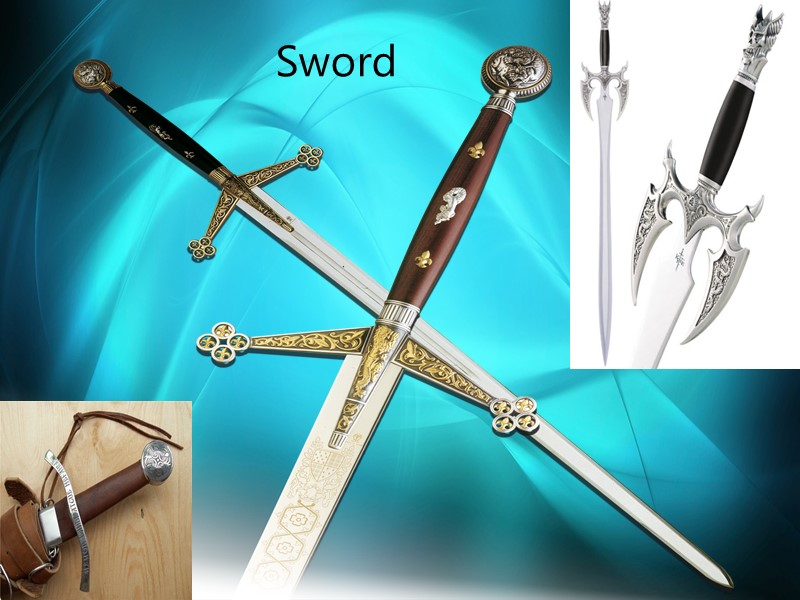

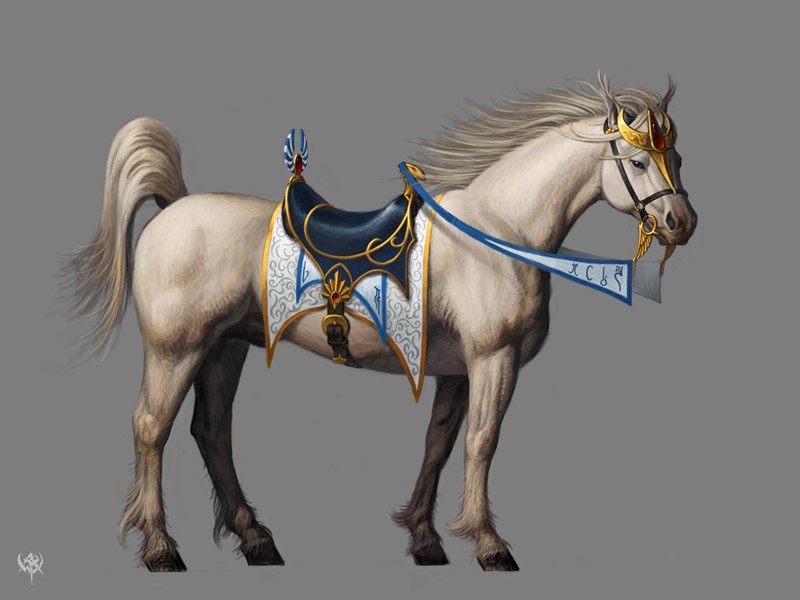
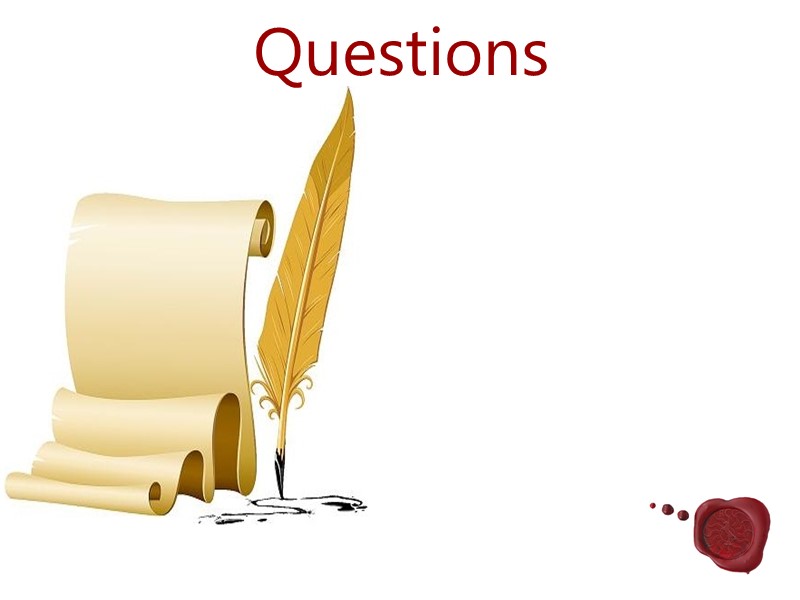
26296-pazdnikova_alexandra.ppt
- Количество слайдов: 34
 The Code of Chivalry
The Code of Chivalry
 The Chivalric Code Chivalry, or the chivalric code, is the traditional code of conduct associated with the medieval institution of knighthood. It was originally conceived of as an aristocratic warrior code — the term derives from the French term for horseman — involving individual training and service to others. Over time its meaning has been refined to emphasize more ideals such as knightly virtues, honour and courtly love, and less the martial aspects of the tradition.
The Chivalric Code Chivalry, or the chivalric code, is the traditional code of conduct associated with the medieval institution of knighthood. It was originally conceived of as an aristocratic warrior code — the term derives from the French term for horseman — involving individual training and service to others. Over time its meaning has been refined to emphasize more ideals such as knightly virtues, honour and courtly love, and less the martial aspects of the tradition.
 Etymology In English, the word is first attested in 1292, as a loan from Old French chevalerie ("knighthood"), an abstract noun formed in the 11th century based on chevalier ("knight" or "horseman"), ultimately from Medieval Latin caballārius ("horseman"); cavalry is from the Italian form of the same word, loaned via Middle French into English around 1540.
Etymology In English, the word is first attested in 1292, as a loan from Old French chevalerie ("knighthood"), an abstract noun formed in the 11th century based on chevalier ("knight" or "horseman"), ultimately from Medieval Latin caballārius ("horseman"); cavalry is from the Italian form of the same word, loaned via Middle French into English around 1540.
 The song of Roland
The song of Roland
 Count Roland Emperor Charlemagne William the Conqueror
Count Roland Emperor Charlemagne William the Conqueror
 The knight In the 11th Century, the doctrine of love became an essential part of the Medieval Code of Chivalry. Knighthood gained more dignity by becoming romantic. The laws and customs of the tournament were inseparable from the love of ladies. A lot of the knight’s leisure time was spent in hunting, but also in music, and exercising the “science” of gallantry and poetry. The chivalric literature shows that the laws of gallantry were more imperious than even those of military honor.
The knight In the 11th Century, the doctrine of love became an essential part of the Medieval Code of Chivalry. Knighthood gained more dignity by becoming romantic. The laws and customs of the tournament were inseparable from the love of ladies. A lot of the knight’s leisure time was spent in hunting, but also in music, and exercising the “science” of gallantry and poetry. The chivalric literature shows that the laws of gallantry were more imperious than even those of military honor.
 Hunting Ladies and music Tournaments
Hunting Ladies and music Tournaments
 History in the Medieval literature Medieval courtly literature glorifies the valor, tactics and ideals of ancient Romans. The ancient hand-book of warfare written by Vegetius called De Re Militari was translated into French in the 13th century as L'art de chevalerie by Jean de Meun. Honore Bonet wrote the 14th century L'arbes des batailles, which discussed the morals and laws of war. In the 15th century Christine de Pizan combined themes from Vegetius, Bonet and Frontinus in Livre des faits d'armes et de chevalerie.
History in the Medieval literature Medieval courtly literature glorifies the valor, tactics and ideals of ancient Romans. The ancient hand-book of warfare written by Vegetius called De Re Militari was translated into French in the 13th century as L'art de chevalerie by Jean de Meun. Honore Bonet wrote the 14th century L'arbes des batailles, which discussed the morals and laws of war. In the 15th century Christine de Pizan combined themes from Vegetius, Bonet and Frontinus in Livre des faits d'armes et de chevalerie.
 De Re Military by Vegetius, L'art de chevalerie by Jean de Meun Livre des faits d'armes et de chevalerie by Christine de Pizan
De Re Military by Vegetius, L'art de chevalerie by Jean de Meun Livre des faits d'armes et de chevalerie by Christine de Pizan
 The Ten Commandments of the Medieval Code of Chivalry Thou should believe all that the Church teaches and shall observe all its directions. Thou should defend the Church. Thou should respect all weaknesses and should constitute thyself the defender of them. Thou should love the country in the which thou was born. Thou should not recoil before the enemy. Thou should make war against the Infidel without cessation and without mercy. Thou should perform scrupulously thy feudal duties, if they are not contrary to the laws of God. Thou should never lie and should remain faithful to the pledged word. Thou should be generous and give largesse to everyone. Thou should be everywhere and always the champion of the Right and the Good against Injustice and Evil.
The Ten Commandments of the Medieval Code of Chivalry Thou should believe all that the Church teaches and shall observe all its directions. Thou should defend the Church. Thou should respect all weaknesses and should constitute thyself the defender of them. Thou should love the country in the which thou was born. Thou should not recoil before the enemy. Thou should make war against the Infidel without cessation and without mercy. Thou should perform scrupulously thy feudal duties, if they are not contrary to the laws of God. Thou should never lie and should remain faithful to the pledged word. Thou should be generous and give largesse to everyone. Thou should be everywhere and always the champion of the Right and the Good against Injustice and Evil.
 Knights Code of Chivalry described by the Duke of Burgandy Faith Charity Justice Sagacity Prudence Temperance Resolution Truth Liberality Diligence Hope Valour
Knights Code of Chivalry described by the Duke of Burgandy Faith Charity Justice Sagacity Prudence Temperance Resolution Truth Liberality Diligence Hope Valour
 Resolution and Prudence Faith and Hope Sagacity Diligence and Valour Temperance
Resolution and Prudence Faith and Hope Sagacity Diligence and Valour Temperance
 Courtly Love
Courtly Love
 The Origins of Courtly Love The origins of Courtly Love were believed to be in Aquitaine in France in the 12th century and spread to other European countries. Eleanor of Aquitaine brought ideals of courtly love from Aquitaine first to the court of France, then to England, where she was queen to two kings. Her daughter Marie, Countess of Champagne, brought courtly behavior to the Count of Champagne's court. Eleanor of Aquitaine
The Origins of Courtly Love The origins of Courtly Love were believed to be in Aquitaine in France in the 12th century and spread to other European countries. Eleanor of Aquitaine brought ideals of courtly love from Aquitaine first to the court of France, then to England, where she was queen to two kings. Her daughter Marie, Countess of Champagne, brought courtly behavior to the Count of Champagne's court. Eleanor of Aquitaine
 The romance of Courtly Love practised during the Middle Ages was combined with the Code of Chivalry. The romance, rules and art of courtly love allowed knights and ladies to show their admiration regardless of their marital state.
The romance of Courtly Love practised during the Middle Ages was combined with the Code of Chivalry. The romance, rules and art of courtly love allowed knights and ladies to show their admiration regardless of their marital state.
 The Art of Courtly Love Andreas Capellanus, "Andrew the Chaplain," is known today almost exclusively for the book in medieval Latin, The Art of Courtly Love. Its original purpose is to describe and codify the principles of a social system that came to be called "courtly love." The Art of Courtly Love falls into three large units or "books." Book One contains some introductory material and definitions, describes the effects of love, tells what classes of people may aspire to love for one another and shows how love may be acquired. Book Two discusses such questions as how love, once attained, may be kept, how it decreases in intensity, how it comes to an end, what to do if one's lover is unfaithful, and what the "rules of love" are. Book Three is about the rejection of love, and why men should, after all, refrain from engaging in love relationships with women.
The Art of Courtly Love Andreas Capellanus, "Andrew the Chaplain," is known today almost exclusively for the book in medieval Latin, The Art of Courtly Love. Its original purpose is to describe and codify the principles of a social system that came to be called "courtly love." The Art of Courtly Love falls into three large units or "books." Book One contains some introductory material and definitions, describes the effects of love, tells what classes of people may aspire to love for one another and shows how love may be acquired. Book Two discusses such questions as how love, once attained, may be kept, how it decreases in intensity, how it comes to an end, what to do if one's lover is unfaithful, and what the "rules of love" are. Book Three is about the rejection of love, and why men should, after all, refrain from engaging in love relationships with women.
 The Art of Courtly Love by Andreas Capellanus
The Art of Courtly Love by Andreas Capellanus
 The Rules of Courtly Love Marriage is no real excuse for not loving. He who is not jealous cannot love. A man in love is always apprehensive. Real jealousy always increases the feeling of love. A lover can never have enough of the solaces of his beloved.
The Rules of Courtly Love Marriage is no real excuse for not loving. He who is not jealous cannot love. A man in love is always apprehensive. Real jealousy always increases the feeling of love. A lover can never have enough of the solaces of his beloved.
 Poems and stories Geoffrey Chaucer, the most famous author of the Middle Ages, wrote stories about courtly love in his book Canterbury Tales.
Poems and stories Geoffrey Chaucer, the most famous author of the Middle Ages, wrote stories about courtly love in his book Canterbury Tales.
 Knights Tournaments in the Middle Ages A Tournament was a series of mounted and armoured combats, fought as contests, in which a number of knights competed and the one that prevailed through the final round or who finished with the best record was declared the winner and awarded a prize. Roger of Hoveden was an English chronicler, who was employed by King Henry II (1133 - 1189) described tournaments as "military exercises carried out, not in the spirit of hostility but solely for practice and the display of prowess". The tournaments kept the knight in excellent condition for the role he would need to play during medieval warfare. Tournaments were exciting and colorful pageants. Hundreds of Knights participated in this popular entertainment of the Middle Ages. Jousts, Melees, Pageantry, Courtly Love and the Chivalric code all played a part in Medieval tournaments.
Knights Tournaments in the Middle Ages A Tournament was a series of mounted and armoured combats, fought as contests, in which a number of knights competed and the one that prevailed through the final round or who finished with the best record was declared the winner and awarded a prize. Roger of Hoveden was an English chronicler, who was employed by King Henry II (1133 - 1189) described tournaments as "military exercises carried out, not in the spirit of hostility but solely for practice and the display of prowess". The tournaments kept the knight in excellent condition for the role he would need to play during medieval warfare. Tournaments were exciting and colorful pageants. Hundreds of Knights participated in this popular entertainment of the Middle Ages. Jousts, Melees, Pageantry, Courtly Love and the Chivalric code all played a part in Medieval tournaments.
 Roger of Hoveden Chronicles (annals) by Roger of Hoveden Henry II Tournaments
Roger of Hoveden Chronicles (annals) by Roger of Hoveden Henry II Tournaments
 Types of Tournaments There were many different types of Tournaments during the Middle Ages which each had a different type of combat method. The events of the tournament were: The Joust - an individual tournament event The Melee - a Team event at the tournament Melee a pied Tournament - Teams of knights fighting on foot Melee a cheval Tournament - Teams of knights fighting on horseback Knights Tournaments - The Kippers and the Spoils
Types of Tournaments There were many different types of Tournaments during the Middle Ages which each had a different type of combat method. The events of the tournament were: The Joust - an individual tournament event The Melee - a Team event at the tournament Melee a pied Tournament - Teams of knights fighting on foot Melee a cheval Tournament - Teams of knights fighting on horseback Knights Tournaments - The Kippers and the Spoils
 Tournaments during the Middle Ages were a good source of revenue for a successful Knight. The champion knight's prize money could fill a considerable purse. But at the tournaments of the early Middle Ages they were allowed to claim the armor and weapons of a fallen adversary during the tournament. To claim the armour and weapons the knight employed a vassal or squire as his 'Kipper'. A Kipper was expected to collect the 'Spoils of Combat' as the tournament proceeded. The word 'Kipper' originated from the Scandinavian word 'Kippa' which means to snatch or to seize (or to catch). The weapons and armor of a knight were very expensive and a fallen knight would not give them up easily. The Kipper was therefore armed with blunt, but heavy clubs, with which they could knock the unfortunate Knight into an unconscious state and collect the spoils of combat.
Tournaments during the Middle Ages were a good source of revenue for a successful Knight. The champion knight's prize money could fill a considerable purse. But at the tournaments of the early Middle Ages they were allowed to claim the armor and weapons of a fallen adversary during the tournament. To claim the armour and weapons the knight employed a vassal or squire as his 'Kipper'. A Kipper was expected to collect the 'Spoils of Combat' as the tournament proceeded. The word 'Kipper' originated from the Scandinavian word 'Kippa' which means to snatch or to seize (or to catch). The weapons and armor of a knight were very expensive and a fallen knight would not give them up easily. The Kipper was therefore armed with blunt, but heavy clubs, with which they could knock the unfortunate Knight into an unconscious state and collect the spoils of combat.
 Victories and defeats in the knights ' tournaments
Victories and defeats in the knights ' tournaments
 Jousting Tournament Jousting is a martial game between two horsemen and using lances, often as part of a tournament. The primary aim is to strike the opponent with the lance while riding towards him at high speed, if possible breaking the lance on the opponent's shield or armour, or unhorsing him. Jousting Rules: The jousting Rules and terms included the following: When and where the tournament would be held Who was sponsoring the tournament The specific styles of combat which were expected to be fought The weapons allowed Jousting Tournaments - The Ceremony observed at Jousting Tournaments Jousting tournaments were great events and tournament ceremonies was observed: Sending of challenges from one noble to another
Jousting Tournament Jousting is a martial game between two horsemen and using lances, often as part of a tournament. The primary aim is to strike the opponent with the lance while riding towards him at high speed, if possible breaking the lance on the opponent's shield or armour, or unhorsing him. Jousting Rules: The jousting Rules and terms included the following: When and where the tournament would be held Who was sponsoring the tournament The specific styles of combat which were expected to be fought The weapons allowed Jousting Tournaments - The Ceremony observed at Jousting Tournaments Jousting tournaments were great events and tournament ceremonies was observed: Sending of challenges from one noble to another
 Jousting Rules Manuscripts depicting tournaments
Jousting Rules Manuscripts depicting tournaments
 Jousting Tournaments - The Preparations Jousting tournaments were great events. They had to be formally planned and preparations were numerous. Challenges from on noble to another to 'Cry the Tournament‘. The 'bans' crying for a tournament consisted of an announcement sent to notify nobles that a jousting tournament was to be held 'at a specific time and place. The news of a jousting tournament was always greeted with great excitement and the banners of the knights were hung from the windows where they lodged or by their supporters. Vespers Tourney: A tournament held on the eve of a larger event, where the younger knights bachelor and squires had an opportunity to demonstrate their prowess before the experienced knights and assembled gallery . Tree of Shields: The place where several colored shields were hung for a pas d’armes.
Jousting Tournaments - The Preparations Jousting tournaments were great events. They had to be formally planned and preparations were numerous. Challenges from on noble to another to 'Cry the Tournament‘. The 'bans' crying for a tournament consisted of an announcement sent to notify nobles that a jousting tournament was to be held 'at a specific time and place. The news of a jousting tournament was always greeted with great excitement and the banners of the knights were hung from the windows where they lodged or by their supporters. Vespers Tourney: A tournament held on the eve of a larger event, where the younger knights bachelor and squires had an opportunity to demonstrate their prowess before the experienced knights and assembled gallery . Tree of Shields: The place where several colored shields were hung for a pas d’armes.
 Jousting Weapons The Jousting tournaments of the Middle Ages were entertainments devised by rich nobles to enable knights to practise their combat skills in mock battles or as in jousting in single combat. A training ground for Medieval knights who could attend Jousting tournaments and demonstrate their combat skills and delight the ladies with their code of Chivalry. There were therefore weapons used in jousting tournaments which were designed to be less lethal than the jousting weapons used in real combat situations and on the battle field.
Jousting Weapons The Jousting tournaments of the Middle Ages were entertainments devised by rich nobles to enable knights to practise their combat skills in mock battles or as in jousting in single combat. A training ground for Medieval knights who could attend Jousting tournaments and demonstrate their combat skills and delight the ladies with their code of Chivalry. There were therefore weapons used in jousting tournaments which were designed to be less lethal than the jousting weapons used in real combat situations and on the battle field.
 The Jousting weapons used during the battles fought during the Middle Ages were as follows: The Lance A Dagger A Sword was attached to the Knights belt The Mace Spikes called Gadlings were attached to the knuckles of gauntlets
The Jousting weapons used during the battles fought during the Middle Ages were as follows: The Lance A Dagger A Sword was attached to the Knights belt The Mace Spikes called Gadlings were attached to the knuckles of gauntlets
 Lance Daggers Mace Spikes called Gadlings of gauntlets
Lance Daggers Mace Spikes called Gadlings of gauntlets
 Sword
Sword
 Description of a Destrier A Destrier was a war horse which were used by Knights in the Middle Ages. It was brought to England by William the Conqueror following his victory at the Battle of Hastings in 1066.The Destrier war horse had a dense rounded body with a broad back, strong loins, powerful hind-quarters, and long legs with dense bones. The colors of a destrier ranged from black, brown, bay, or gray. It sometimes had long silky hair (often white) on the lower parts of its legs. It was a massive animal measuring in excess of 24 hands tall.
Description of a Destrier A Destrier was a war horse which were used by Knights in the Middle Ages. It was brought to England by William the Conqueror following his victory at the Battle of Hastings in 1066.The Destrier war horse had a dense rounded body with a broad back, strong loins, powerful hind-quarters, and long legs with dense bones. The colors of a destrier ranged from black, brown, bay, or gray. It sometimes had long silky hair (often white) on the lower parts of its legs. It was a massive animal measuring in excess of 24 hands tall.

 Questions
Questions

